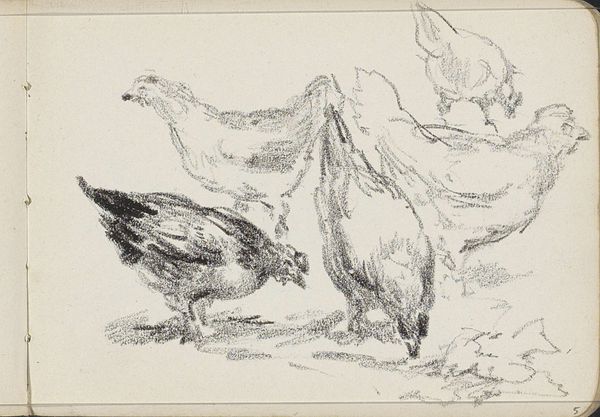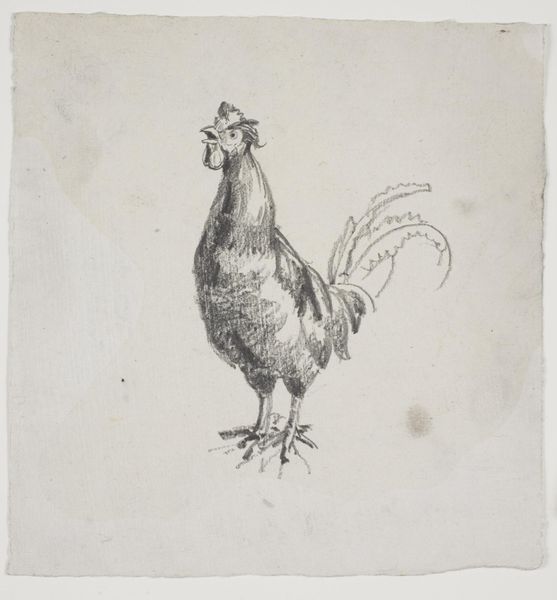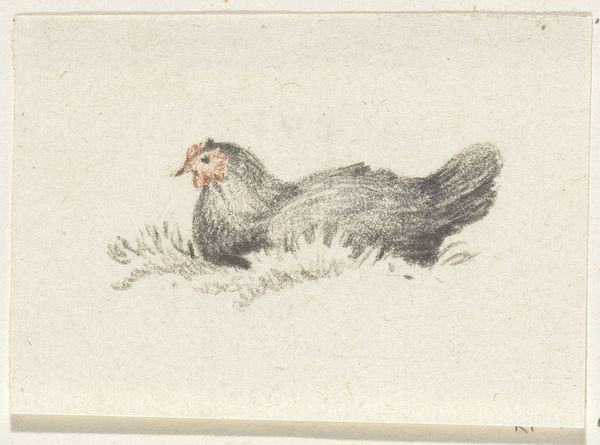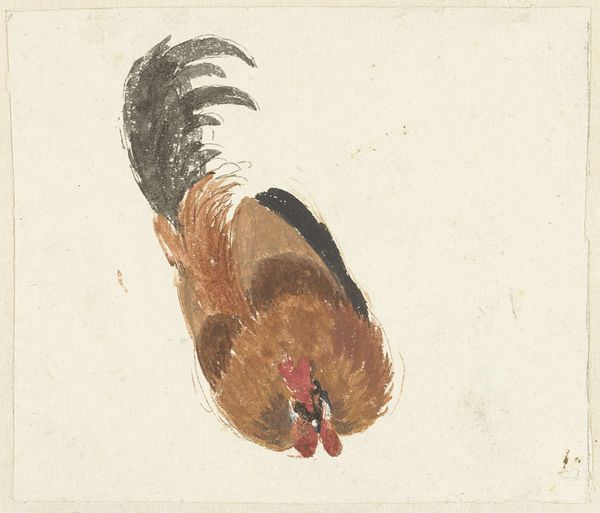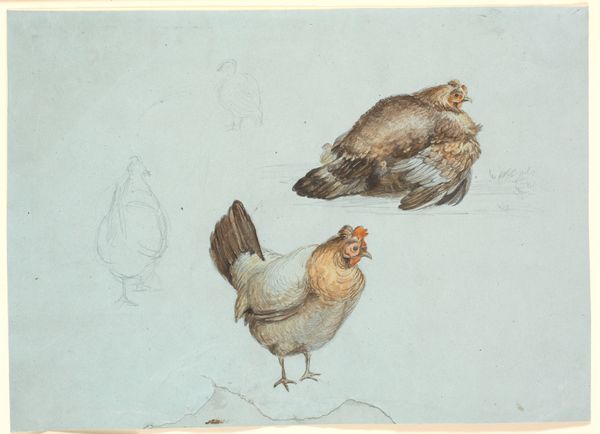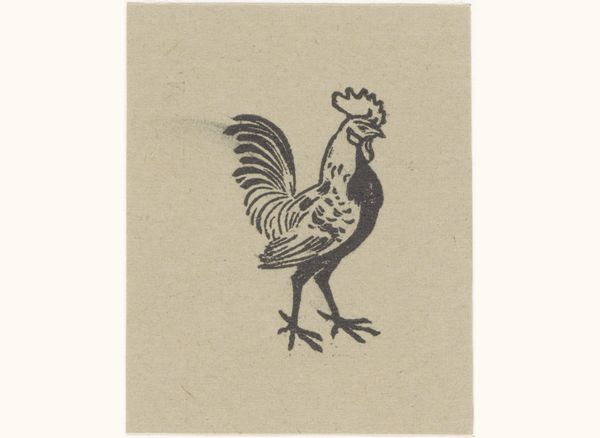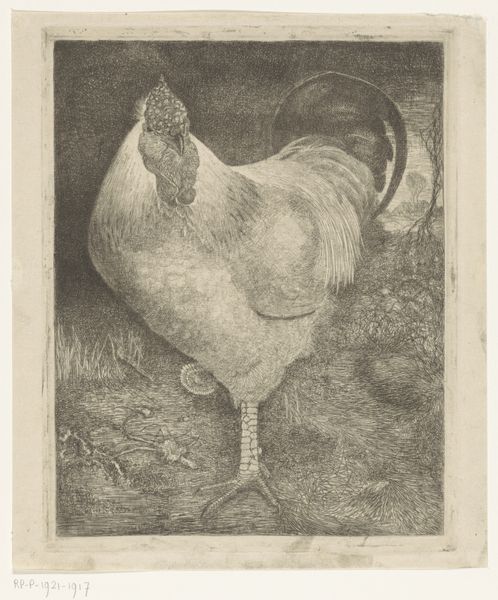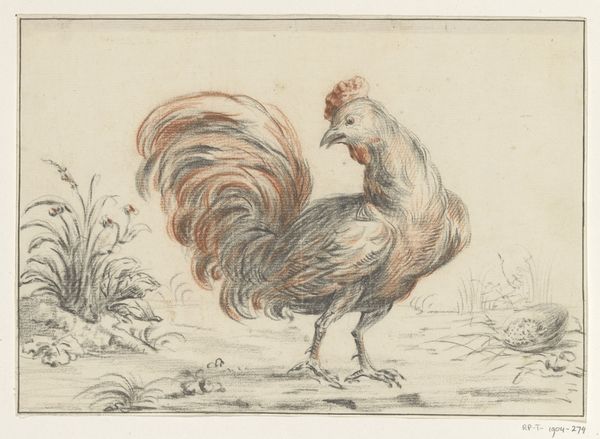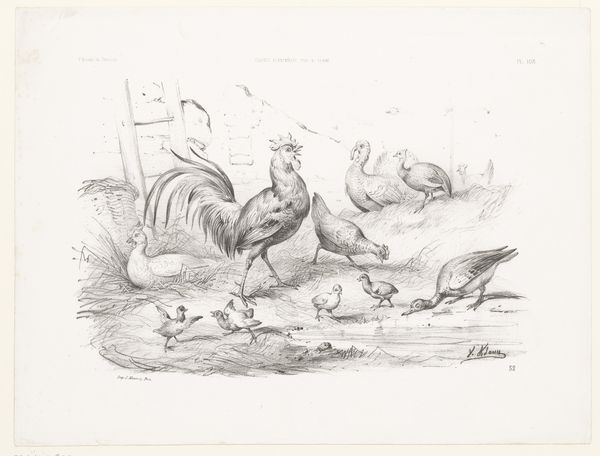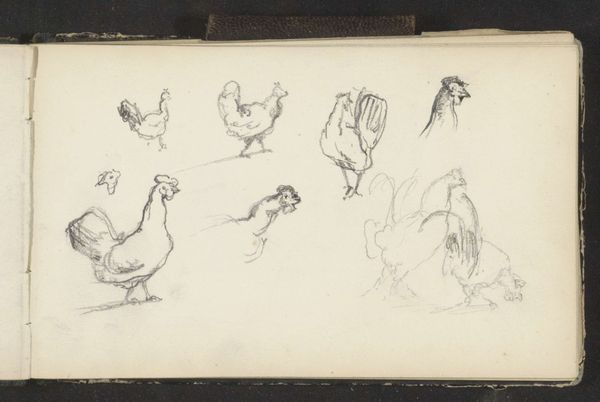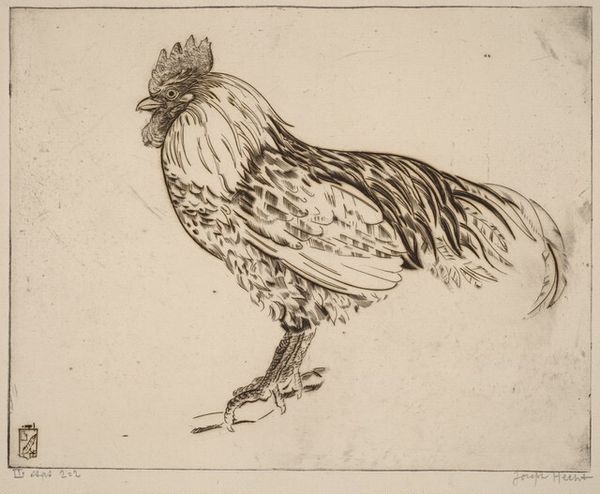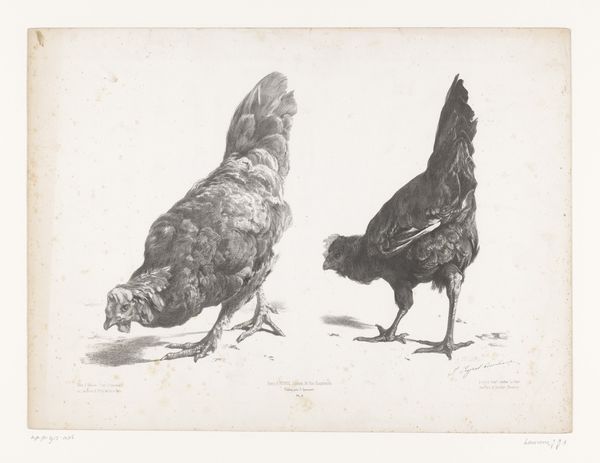
drawing, paper, ink, pen
#
drawing
#
figuration
#
paper
#
ink
#
ink drawing experimentation
#
pen-ink sketch
#
sketchbook drawing
#
pen
#
pencil work
#
realism
Dimensions: height 153 mm, width 253 mm
Copyright: Rijks Museum: Open Domain
Curator: Before us is "Kalkoen," a drawing rendered in pen and ink on paper, dating from sometime between 1811 and 1873. It's part of the Rijksmuseum collection, attributed to Pieter van Loon. Editor: It's surprisingly endearing! The turkey's stance seems almost defiant, yet there’s a fragility in the lightness of the lines. There's so much blank space... Curator: Absolutely, and that negative space is crucial. It allows us to really focus on the subject—to examine van Loon's technique. Look at the detailing in the feathers, achieved solely through line work, and how the pressure of the pen creates depth and volume with the hatching and cross-hatching. One might consider this artwork from the context of its production, which reveals insights to its process-centered origins as a work intended for future use, or to explore technique. Editor: I’m struck by the animal’s depiction during that period. Consider the 19th century, where representations of animals were charged. Were they for scientific observation, allegorical lessons, or simply asserting human dominance over the natural world? How might a turkey in this context become symbolic? Consider also the relationship between nationhood and food sovereignty within that time frame and its implications on modern food systems. Curator: A point well taken. These fowl were commodities, yes, but van Loon chose to portray it with such detail, lending the animal a certain presence. The economy and labour dynamics tied to these animals are equally noteworthy— from raising and butchering to marketing and consumption. Every stage has its workers, techniques, and power structures. Editor: Exactly. And within a colonial context, it provokes uncomfortable questions about food hierarchies, who eats what, and at whose expense. The simplicity belies a far more complicated web. And as the scale and materials might signal as well, let us ask ourselves, what narratives and systems are legitimized and perpetuated through displays like this? Curator: So, it's not just about aesthetic qualities, but a window into material history and consumption as well? Editor: Precisely. The blank background emphasizes that context, directing us to fill in the gaps, think about what's not shown but very much implied, so what do we take from it? Curator: Thinking about van Loon’s ‘Kalkoen,’ it’s not just a rendering of a bird but an entry point into much larger conversations surrounding food production, labor, and symbolic representation within systems. Editor: Indeed, offering ways to reframe narratives around these commonplace figures we have overlooked through centuries of change and labor exploitation.
Comments
No comments
Be the first to comment and join the conversation on the ultimate creative platform.
